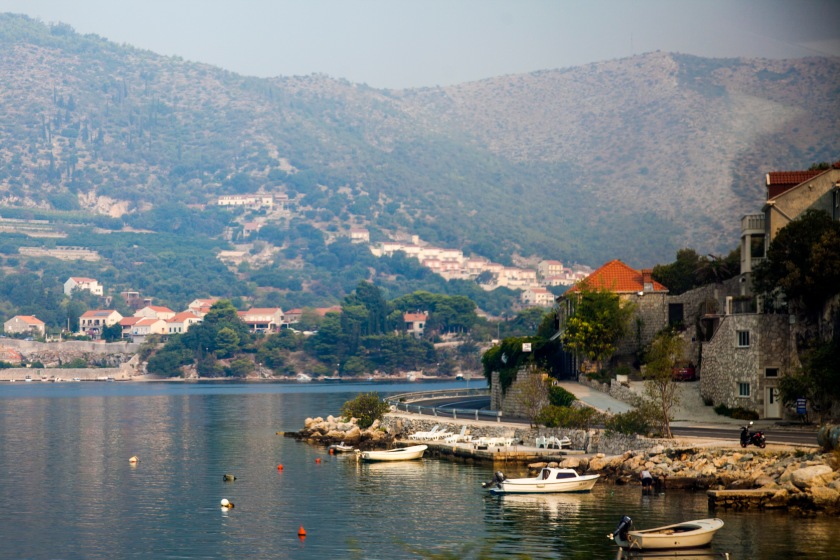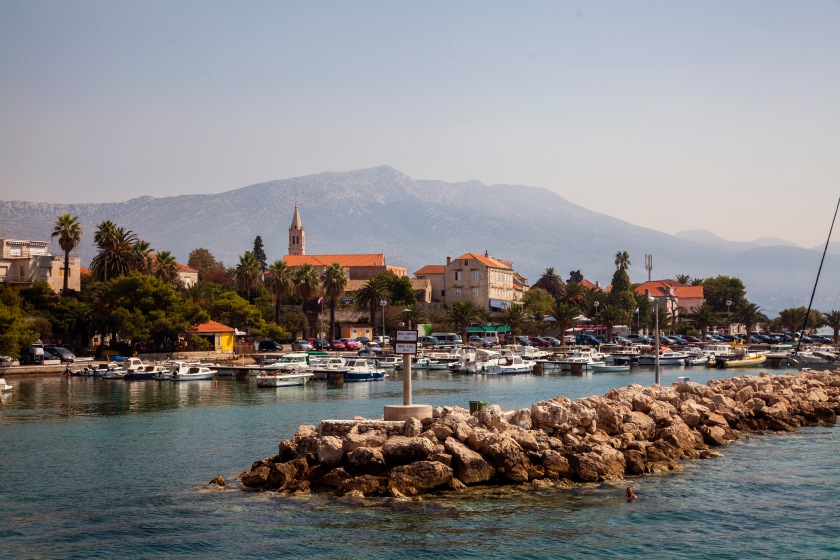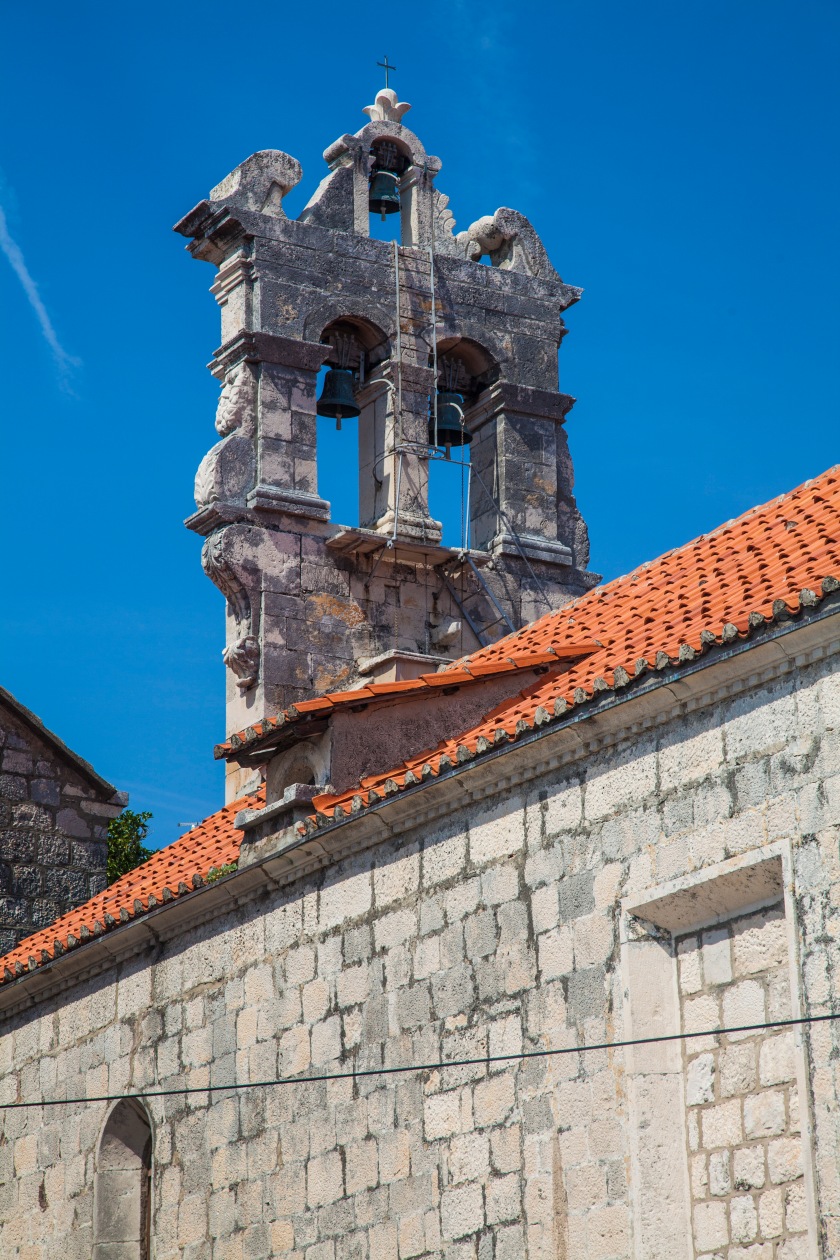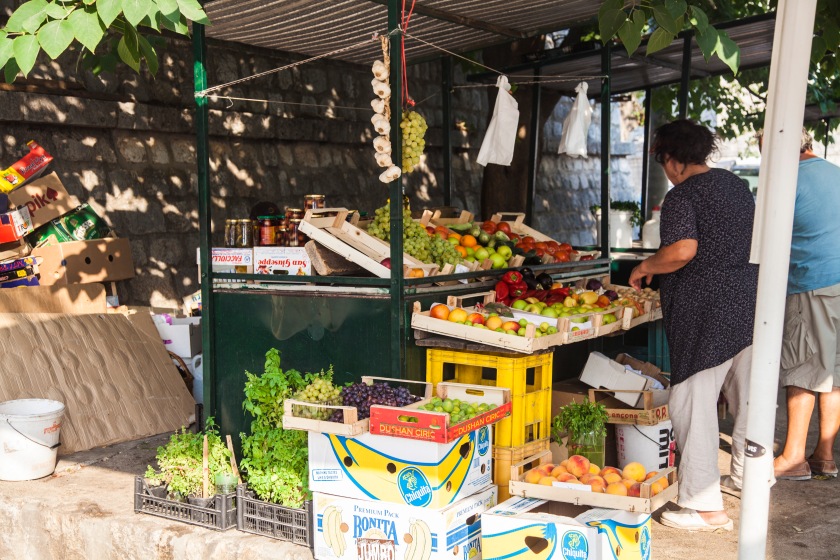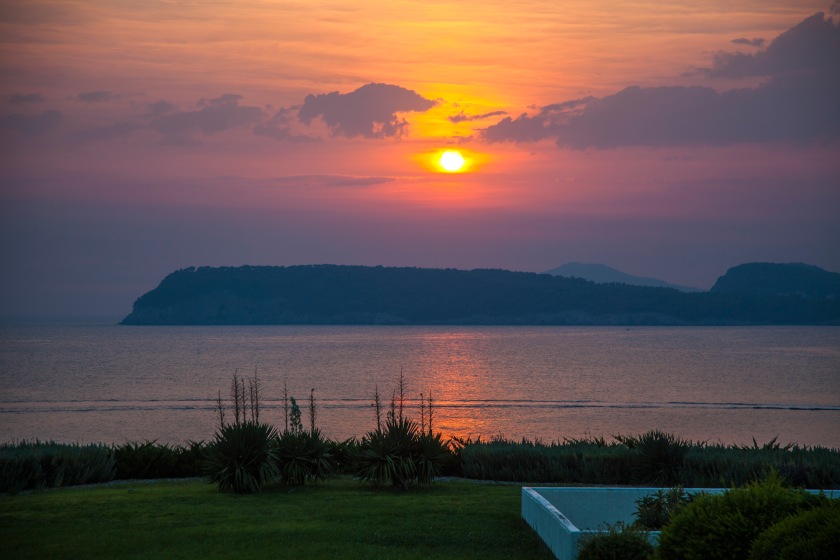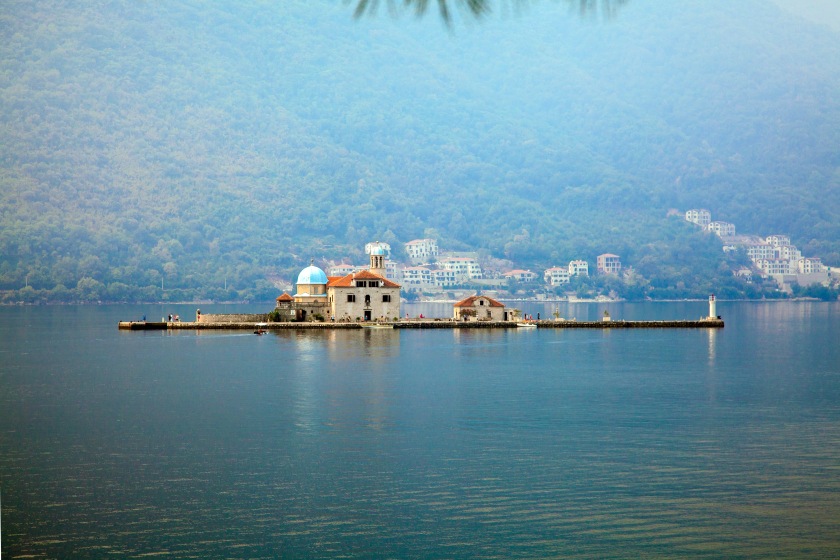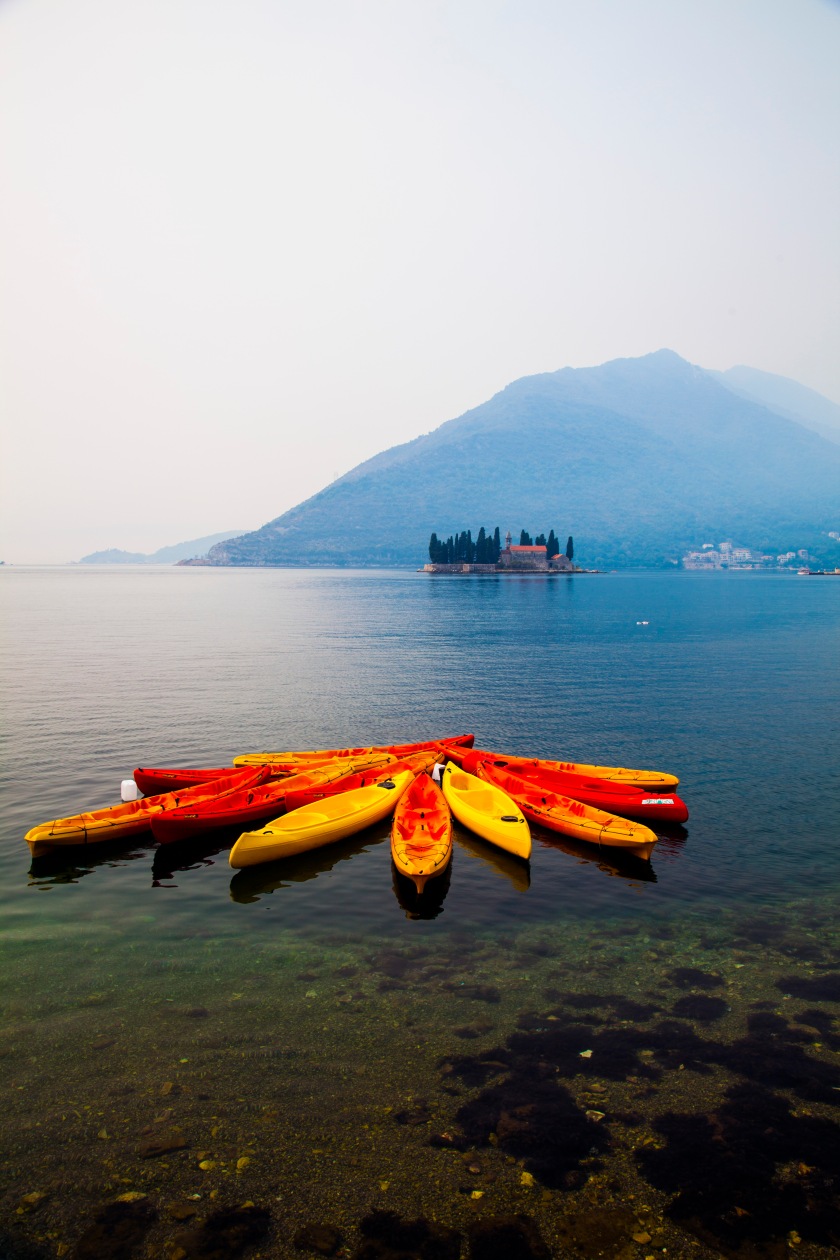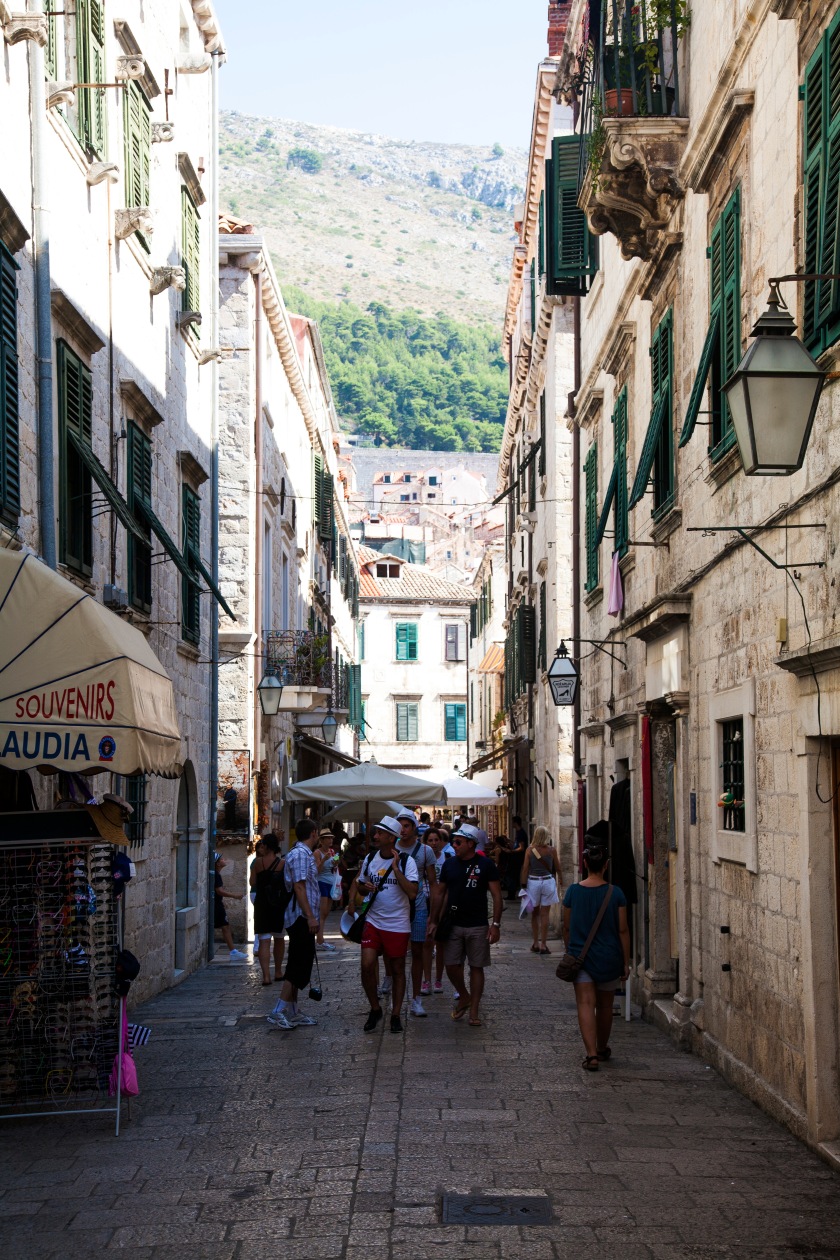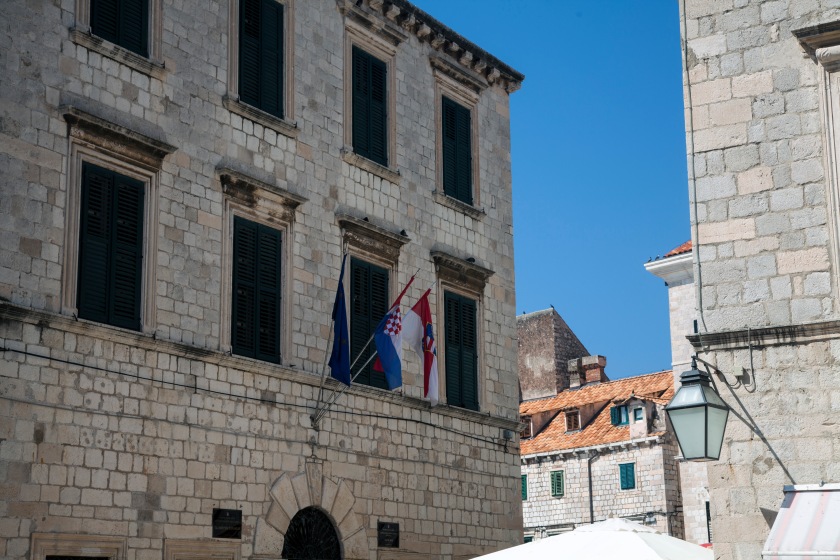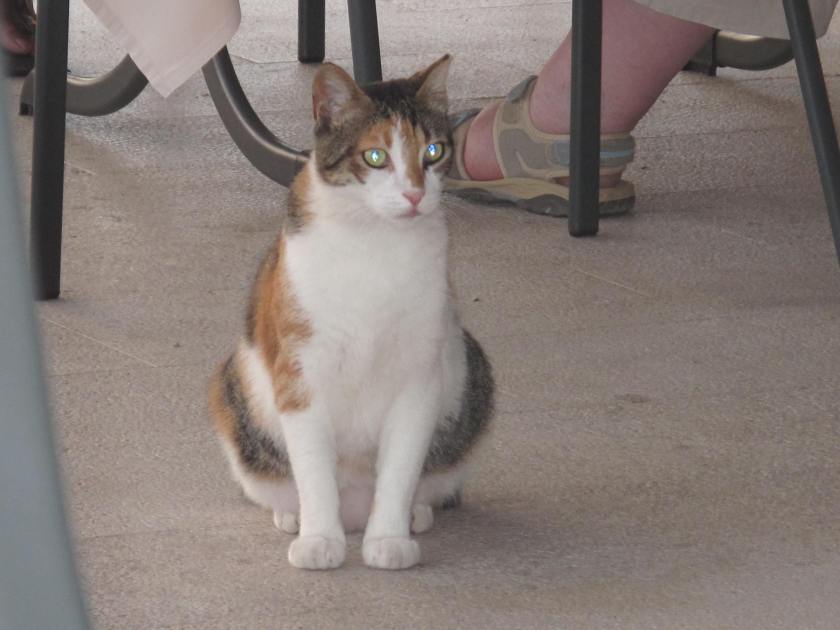РУССКОЯЗЫЧНАЯ ВЕРСИЯ ПО ЭТОЙ ССЫЛКЕ. CLICK HERE FOR RUSSIAN VERSION.
31 August 2012 – Friday
After the two tours we had had with the “Elite Travel” company, where we were picked up next to the “President” hotel, our impressions about this company and their work were quite good. And looks like we put an “evil eye” on them: our today’s trip to the Korčula island started with a hitch: the bus didn’t arrive. It turned out that the day before we had been forgotten to be included in the list. As a result, we were picked up by a separate minibus and delivered to the port of Gruž, where we eventually found our group and the guide. The guide (also named Ivana) initially seemed to us a bit rude (instead of apologising immediately, she attacked us – saying something like, come on, what’s your problem, you’ve been finally brought here after all!), and most importantly, uninteresting – she was literally falling asleep while making comments in English and German. She seemed more willing to speak German, by the way – generally I noticed a clear preference shown to German tourists here.
Another problem – among the group there was a family with a two-year-old toddler, for whom this long road, quite obviously, was way too long: in the good moments he was spinning like mad, while in the bad ones he was crying and throwing up. So, his presence added neither peace, nor fresh air to other passengers.
We climbed high into the mountains, again very close to the burning Bosnia. In the town of Slano we picked the last passengers. The location is called Slano (“salty”), because, starting almost from the first settlements, when salt used to be worth its weight in gold, it was mined here. Because of this salt, the Ottoman Empire’s caravan ways passed through these places.
This time the road was totally crazy. In some parts of it even looking down was scary, and at the same time it was hard to tear oneself away from the window – the view was unbelievably beautiful!
Virtually the entire foreseeable space around us was covered with vineyards. The plan was to visit one of them for wine tasting on our way back. Our guide told us that mainly red wine is produced here, and Postup is considered to be the best of all. Looking ahead, I can mention that Korčula is famous for its white wine, Pošip.
We were transported to Korčula on a small shuttle boat from Orebič (a very nice town, by the way), and got to observe how cars and even buses were transported on a large ferry.
In the town of Korčula we were to visit the Old Town, and the whole group was divided into English speakers and German speakers. The English speakers stayed with our gloomy, moody and sleepy guide, – and that was when she suddenly revived, and showed great artistry and a sense of humour.
First thing, she told us about the local “wind rose”. There is the north wind “bura”, which blows in winter and brings clear and sunny weather, although lowering the temperature to zero. There is a south wind called “jugo” or “siroc”, the locals’ least favourite: it blows from the Sahara in summer and brings dust, and, oddly enough, rain. The city walls are located so that this wind could penetrate the city as little as possible. Finally, the wind most preferred by the population is the western “mistral”, bringing cool air in summer. The city is open for this wind from the sea, and, as Ivana joked, this was the first air-conditioning system in the world.
On the city gates the name of the first Croatian King Tomislav is engraved, and above it there is the Venetian winged lion, as the city used to belong to the Venetian Republic for a long time. These lions usually have their attributes, or symbols, showing how easy or difficult it was to get into the town. If the lion has a closed book before it, it was hard, and if the book is open, it means that the Venetians were accepted almost with open arms.
We came to Korčula thinking of Marco Polo, because we had heard that he was from here. However, it turned out that Venice claims to be his hometown as well, and also, his home as such does not exist – the assumed house is a ruin. As our guide indignantly mentioned, in communist times nobody really cared about history, and in the times of crisis the intention even was to sell it. Luckily, the town borrowed some money and bought the house out (currently the price of these ruins is half a million euros!), but that money wasn’t enough to restore the building and make a museum out of it, as planned. For the time being some enterprising and patriotic Korčulan opened a souvenir shop named after Marco Polo, and behind it, the Museum of Marco Polo, in a totally different place.
By the way, three things are cited as proof that Marco Polo was born here indeed: first, there is a De Polo family still living here to this day, while in Venice there are no families with such name. Secondly, there exists a register of baptisms of the 14th century, which mentions Marco de Polo. Of course, the great traveller lived in the 13th century, but because it was quite common to give children the names of their ancestors, this could well be some great-grandson of his. Well, and thirdly, the book written by Marco Polo’s cellmate brings his own words, saying that he saw the tower of his hometown Corcyra Melaina and sailed towards it. It is proved that this is how Korčula was called in the ancient times, and no other city, including Venice, has claims on this name. As there is only one tower in the town, the house of Marco Polo could be identified.
One of our stops was in the atrium. Ivana showed us, where the mayor and his secretary would seat and how they would collect the citizens’ complaints, literally portraying and mimicking each of them.
In front of the atrium was the doctor’s house. Doctors used to be lured from Venice, the bait being this very house. The doctor could live there with his family as long as he remained in the service of the city of Korčula.
We made good use of our free time – at least, I got a chance to take a quick dip in the sea, right in the city, among boats – even there it was very clean. I deliberately found a deep place, as it was impossible to get into the water in the shallow part because of the large slippery rocks.
On the way back we were taken to a huge winery belonging to the Matuško family. This family produces 500,000 litres of product annually, 90% of which is red wine, and the remaining 10% is comprised of white wine, dessert wine, schnapps and olive oil. They have huge cellars, completely cluttered with enormous barrels.
The first wine we tried was Plavac Mali. The name generally belongs to a grape variety, grown in the continental climate, in places where there is enough water, but not so much sun. 4—5 kg of grapes can be collected from one plant. The wine turns dry and light (only 12.2%), and is only drunk young.
The next wine was Dingač, made from the same grapes variety, but grown in Mediterranean climate: a little water and a lot of sun, and the sunlight comes from three sources: direct, reflected from the sea and reflected from stones. As a result, no more than one kilogramme of grapes is collected from each plant; the wine turns more robust, almost black (14.5%), and is preserved for several years.
The next drink to try was the sweet dessert wine called Prošek. It can be maintained for many years: according to tradition, when a child is born in a family, a barrel of Prošek is made, and it can only be opened at this child’s wedding. Personally, I found it it too sweet. And finally there was a 40% grappa and a 25% cherry brandy, made from this very grappa.
We then had a short stop in the town of Ston. There, too, there is the old town and a fortress, but we didn’t get to see them.

